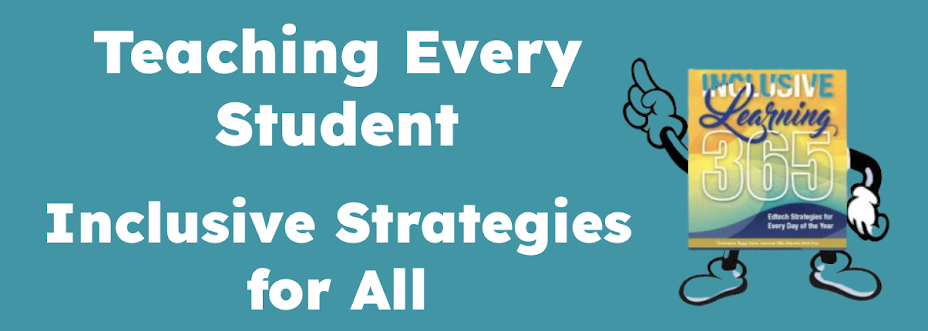Parent: "How was your day?"In the spirit of rethinking a variety of school practices, it is time to revisit the traditional home-school communication method in special education - the home-school communication notebook (HSCN). It is not uncommon for special educators to use a home/school communication notebook to provide information to parents about their child's day.
Student: "Boring."
Parent: "What did you do?"
Student: "Nothing."
Before we consider alternatives, let's first explore the importance and benefits of effective home-school communication from Home-School Communication: What's All the Commotion?):
Why is it important to consider alternatives to the traditional communication methods?
- Parents and teachers consider communication the number one factor to increase trust (Adams & Christenson, 2000).
- Strong communication can also encourage higher and realistic parental expectations. When teachers and parents are on the “same page” they can engage in more individual and concrete discussion around student progress and develop realistic goals and plans of action that are linked to student achievement (Drake 2000; James, Jurich & Estes, 2001).
- Parents who receive more consistent information about their children's school performance report a higher degree of commitment to helping children improve (Helling, 1996).
- Parents view effective communication by a new school as a quality that makes the transition from preschool to kindergarten positive (Rimm-Kauffman, 1999).
- Communication serves as the first step to other types of parent involvement to follow (Elman, 1999).
- Parents seek good communication skills in their children's teachers, citing it as one of the most desirable characteristics a new teacher could have (Lupi, 2001; McDermott, 2001).
1. The home/school communication notebook is adult focused and adult driven.
2. The notebook can be lost or misplaced in the school or home.
3. Documenting in the HSCN is time consuming; there is often a separate notebook for each student in the special education classroom or special education program.
4. Too often, the HSCN focuses on reporting about behaviors and not what the students actually did in school that day. The documentation does not necessarily promote constructive dialogue at home.
5. New technologies allow for greater flexibility and promote innovative practices.
Interested in learning about alternatives? Start with Sound Recordings. Why use sound recordings?
Sound recordings can be time savers, You create one recording about the day and share it with all the parents in the program. An adult is not necessary with sound recordings, once students understand how to use the online resources. Every day, a different "historian" can record the highlights of the day. It becomes a student driven process.
Vocaroo - Web-based, free audio recorder. Simplest method for voice recordings. Click Record, record your voice and share.
Add, digital photos.
Voisse - Free, very easy online method to record your voice, share with parents. The recordings are dated and saved when you sign up for an account.Keep a running record of your daily School Reports in your personal library. Also possible to upload photos and attach voice recordings. EASY!
Fotobabble- Easily create talking photo records of the school day. Share with parents. Free online tool. Also available as an app for iOS devices. EASY, EASY!
Voicethread - Upload multiple photos and record your voice describing each photo separately. Involve multiple students in the process of documenting the day. A free online resource - To Create - Upload, Comment, Share. Read the Educator's Guide to VoiceThread.
Use these options as teachable moments. "What do we believe are the most important parts of the day? What do we want to share with our families? What pictures should we take about our day?" Share, share, share. Parents love to know about the school day!
Do you have other ideas that work in your classroom? Would love to learn from you as well. Please leave your ideas that work in the comment section.



7 comments:
If possible, a small flip camera to go between home and school. Student can be responsible for filming video of their school day.
we are trying to encourage parents and staff to create groups with parents, teachers and support staff. Here they can all communicate
Great post Karen describing the challenges of using a home-school communication notebook as well as highlighting some of the other options available.
We are developing a new collaboration platform called Goalbook (https://goalbookapp.com) that lets you set up a private social network around individual students and parents.
The Friendship Circle blog recently highlighted Goalbook here and in the post are videos highlighting the benefits to educators and parents:
http://blog.friendshipcircle.org/2011/08/31/goalbook-a-new-platform-for-schools-special-educators-and-parents/
Karen,
I would think that using recordings could be a great motivator especially with high incidence learners. I like that this puts the recording in the hands of the students not just the adults.
Thanks for sharing.
I think that this is a great start toward more open communication between school and parents. But what about the student? I'm not a Special Educator yet, but I think that I would want my students to participate in the responsibility of learning; including writing down assignments and self-assessment with academics as well as behavior.
Again, this is a great start, or an alternative for students who have severe or profound disabilities. Can a student be too reliant on this HSCN? The technology portion of this article was very enlightening and I enjoyed the alternatives for writing.
I think that we need to keep in mind that some students are able to do for themselves, and if they are, let them. Give them responsibility and say in their learning (both academically and socially).
Digital Voice Recording could be helpful in many situations. It becomes a teaching tool about better communication skills.
Thank you all for leaving your comments. As Nancy and T have pointed out, these methods can be student initiated as well. When we use home/school communication notebooks, they are rarely, if ever, completed by students.
These methods offer additional ways to empower students, encourage them to reflect upon their day and share information with families at home.
Post a Comment